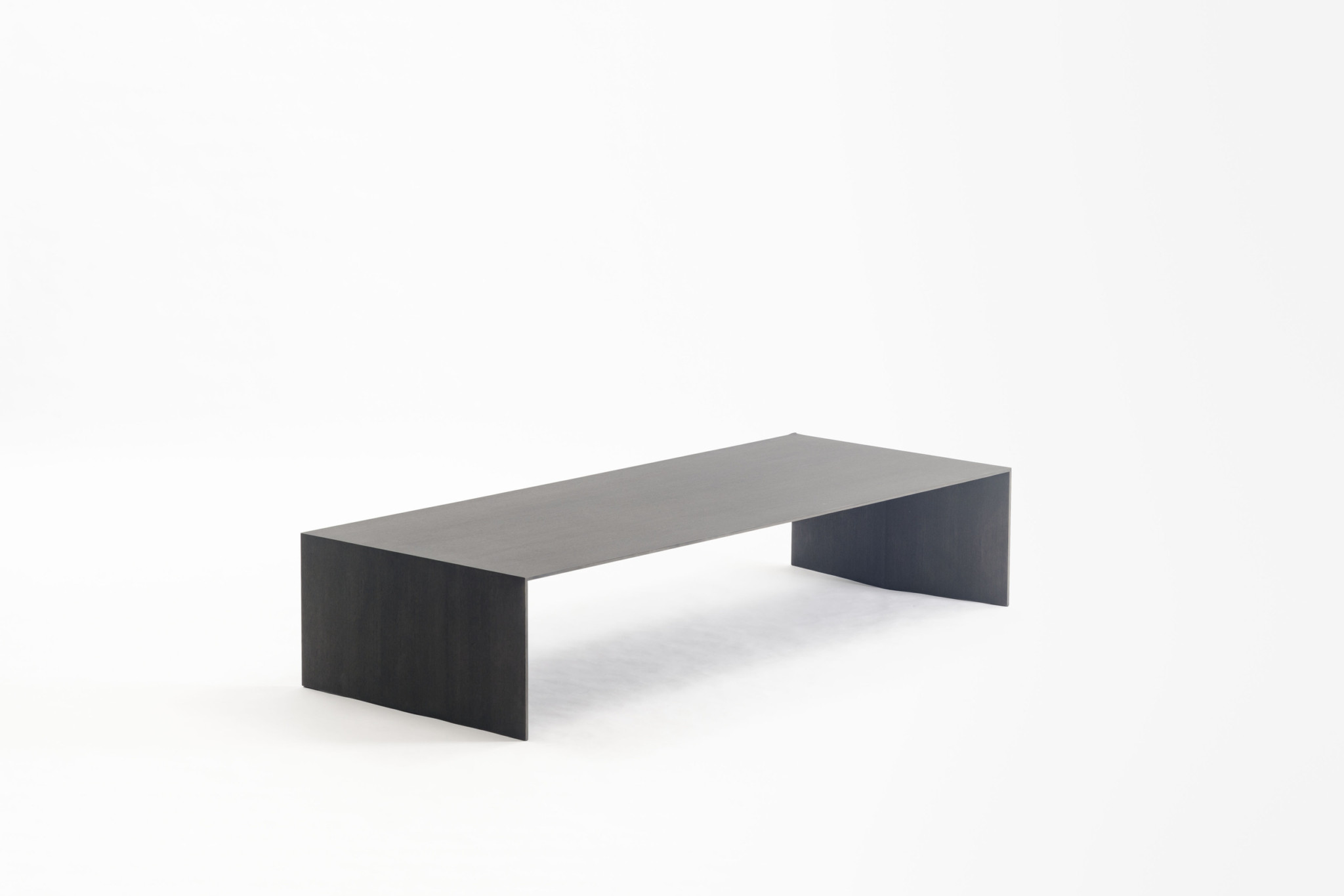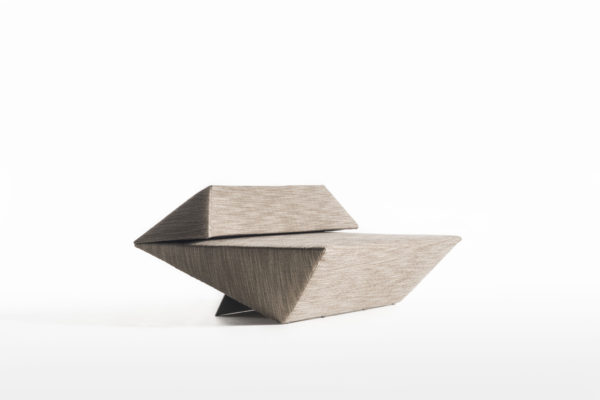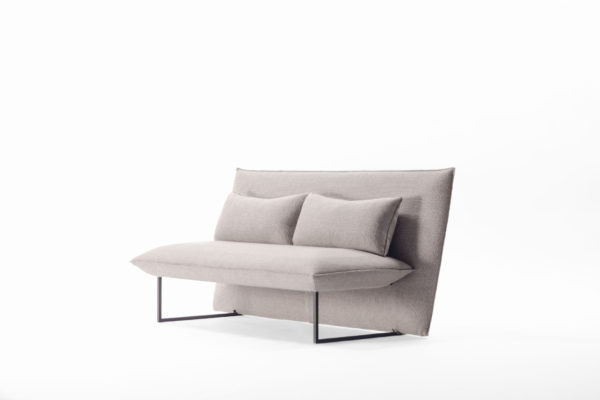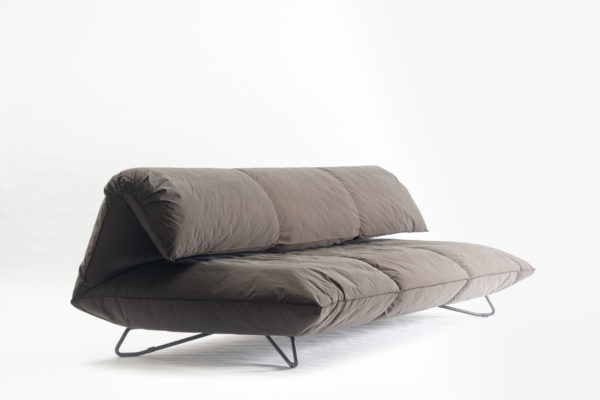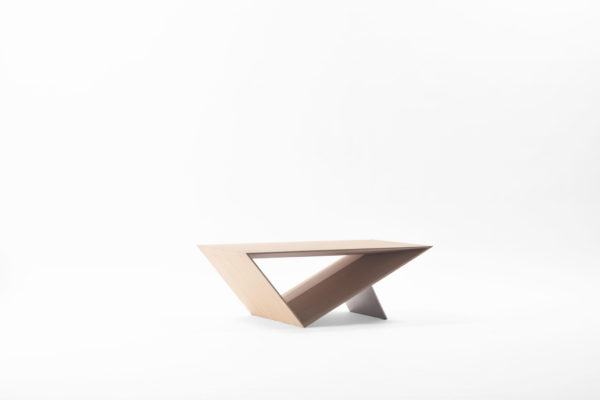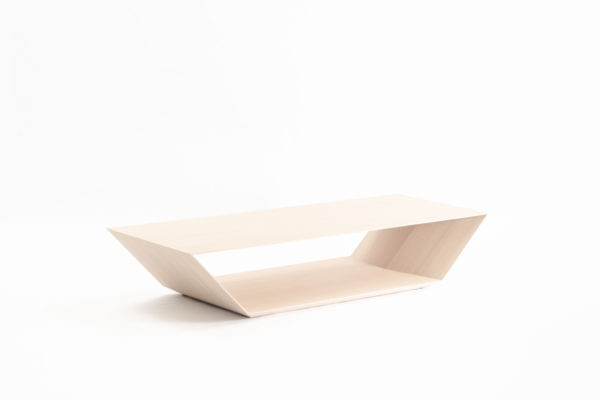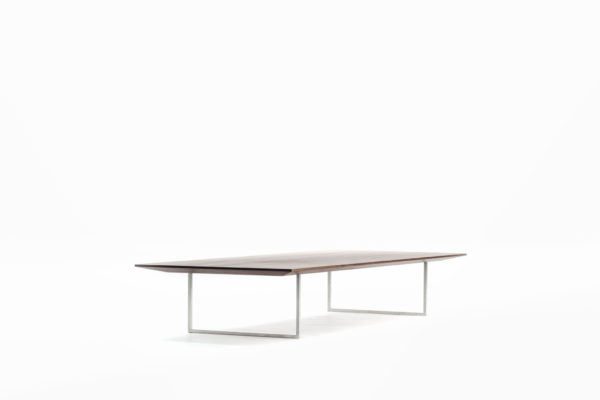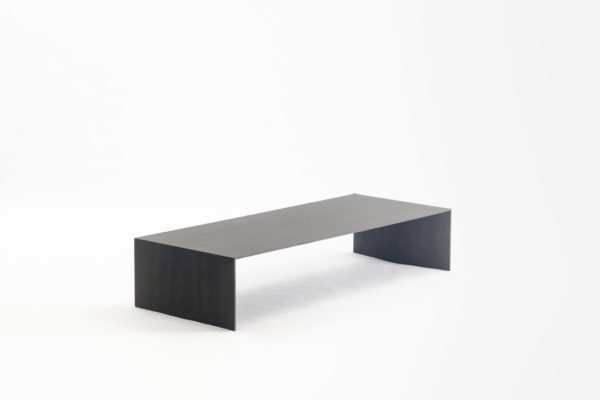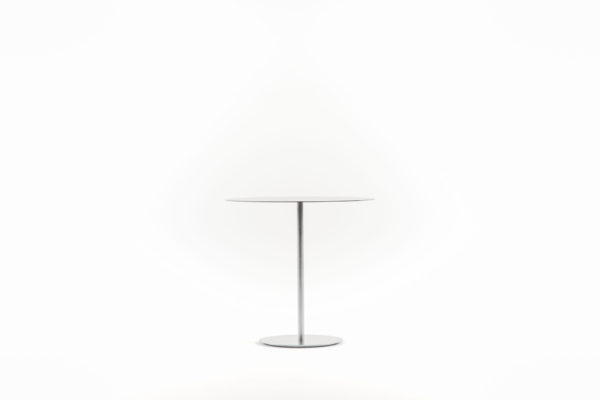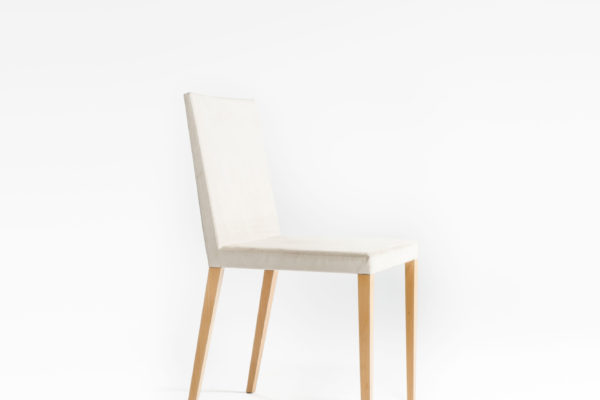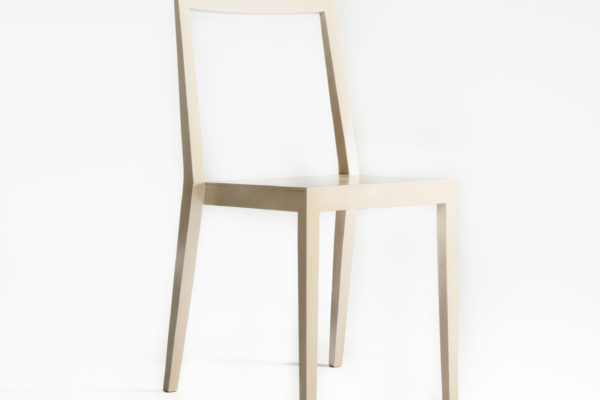Kengo Kuma × Time & Style
KA
“Kaku-Kaku” is a Japanese onomatopoeia to express “full of corners”. The sofa is a combination of “Kaku-Kaku” triangles. Contrary to its sharp appearance, it feels soft when you sit down on it.
FU
“Fuka-Fuka” is a Japanese onomatopoeia to express “fluffy”. It is a simple make, just a reshaping of Japanese Zabuton (square floor cushion) into a sofa.
Look at the super-thin edge of the cloth.
MA
“Maki-Maki” is a Japanese onomatopoeia to express “roll and roll”. We kept rolling the fabric to find a sofa coming into being. Rolling fabric bears a little opening at the core. The space is often called “Ma” in Japanese,
one of the key concepts of Japanese culture. This sofa is with “Ma” also in this sense.
TS
“Tsun-Tsun” is a Japanese onomatopoeia to express sharpness. This triangular side table owes its name to its sharp angles, inspired by the lateral silhouette of the KA sofa. It was designed to fit seamlessly next to the KA sofa.
DI
The front silhouette of the KA sofa inspired the trapezoid design of this low table.
FL
This design looks as if a thin board is floating in the air. The table legs appear invisible, and there are no elements that create a sense of unevenness under the tabletop.
CO
The sharp, slim design of this wooden table resembles the Japanese katakana character “co”. The slender tabletop edges grow thicker towards the center of the table, guaranteeing stability.
PE
“Pera-Pera” is a Japanese onomatopoeia to express thinness. This table was named for its thin tabletop.
This neutral design is available in a wide range of materials.
NC
This chair was designed for the NEZUCAFE at the Nezu Museum. With a combination of simple design and delicate details, it blends into its surroundings and harmonizes with the building.
GC
This chair was designed for the GC Prostho Museum Research Center. Its design matches the wooden grid structure that dominates the space and allows for the chairs to be stackable.
